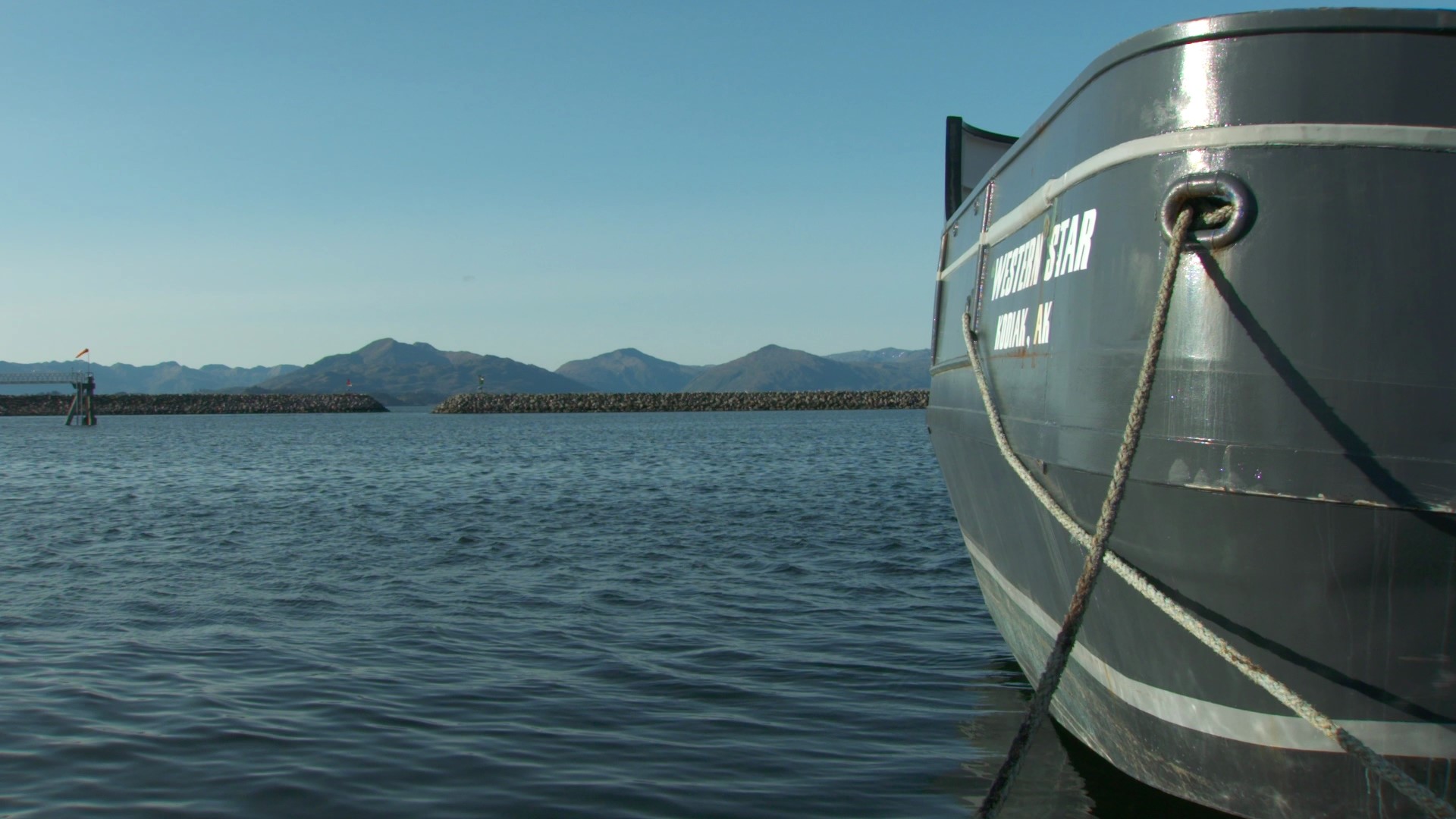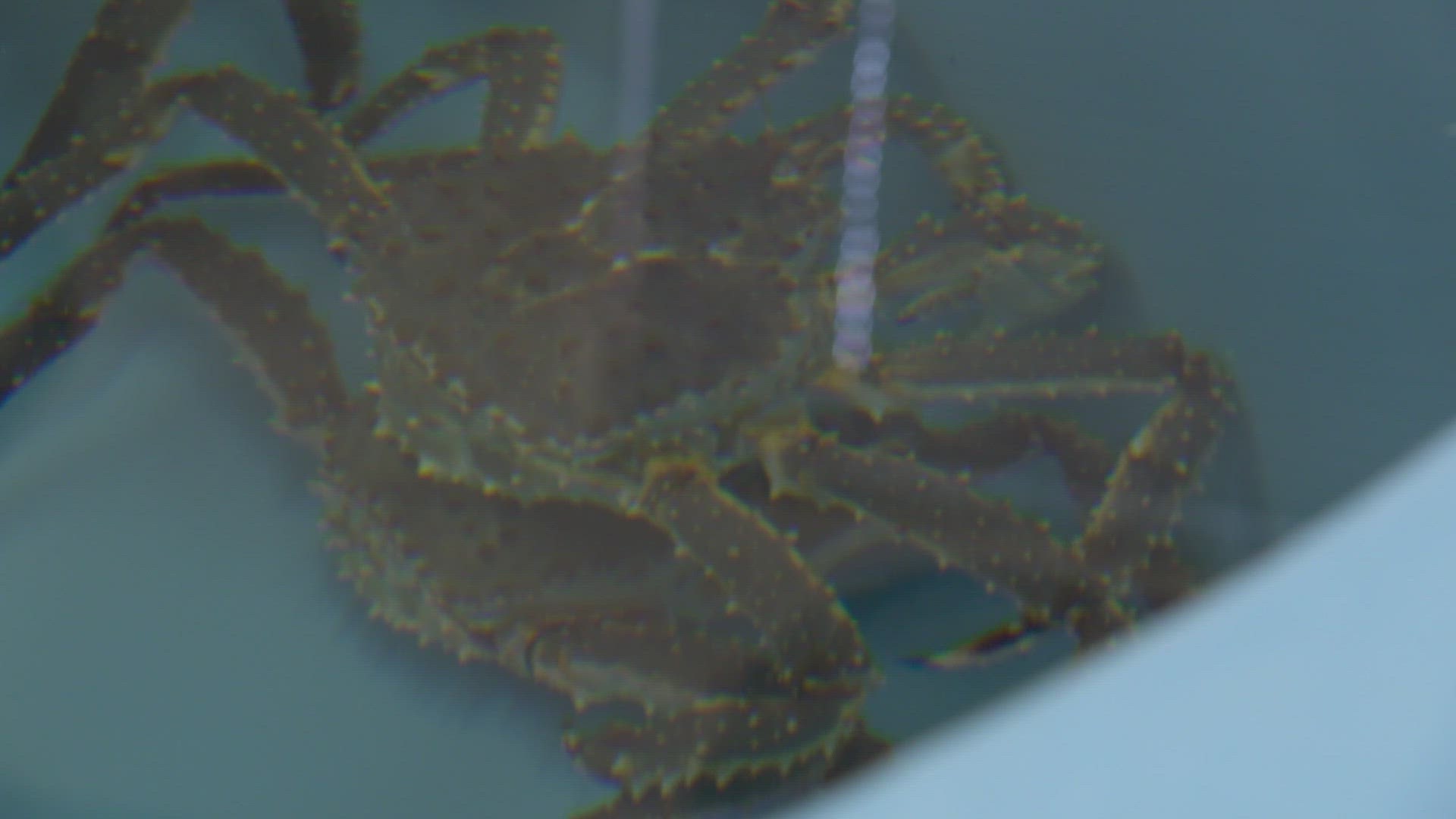Crabbing in crisis: A look into economic, environmental factors disrupting the global seafood industry
KING 5 traveled to Kodiak, Alaska to learn more about the current crabbing crisis.

The crabbing industry in western Washington and around the globe is in crisis.
This is due to environmental impacts, like warming oceans, and economic factors, like inflation, that are putting a strain on fishermen.
KING 5 traveled to Kodiak, Alaska to learn more about the current crabbing crisis.
Snow crab harvest season canceled again Last year was the first time in history the U.S. snow crab fishery was closed due to population concerns.
The Bering Sea snow crab fishery will be closed again this year due to population concerns.
Crabbers from the Pacific Northwest who fish in Alaska had been watching and waiting for recommendations from the North Pacific Fishery Management Council, which met Thursday and Friday. Following the meetings, the Alaska Department of Fish and Game said Bering snow crab season will be closed for 2023-2024; Bristol Bay red king crab will open. Tanner crab will also be open for commercial fishermen.
Both the snow crab and Bristol Bay red king crab seasons were closed in 2023. Crabbers and industry associations warned of the massive impact the decision would have on many small businesses, prompting calls by Congressional officials for an emergency declaration and federal aid.
Last year was the first time in history the U.S. snow crab fishery was closed. The Alaska Department of Fish and Game said the harvests were closed over concerns about long-term conservation and the sustainability of crab stocks.
There was some good news for fishermen that came out of the meeting. Read more
How 10 billion snow crab vanished from Alaskan waters Fishermen feel the pinch after Bering Sea snow crab season canceled for the second straight year.
Early fall is usually when crabbers are frantically preparing for a long season that starts October 15, but this year is different. A huge portion of the crabbing season is canceled with the news that once again, snow crabs will not be caught in the Bering Sea.
This is the second year in a row that the Alaskan crabbing industry is taking a hit, an unprecedented event.
A red flag was raised during the National Oceanic and Atmospheric Administration's (NOAA) annual summer survey. Every year, NOAA spends months collecting data on the Bering Sea crab population.
Recent years show drastic changes. In 2018, there were an estimated 12.2 billion snow crabs in the Baring Sea. In 2019, that number dropped to just shy of 5 billion snow crabs, but it wasn't enough to raise red flags at the time. The summer survey was canceled in 2020 because of the pandemic. Then, in 2021 when the survey returned, those snow crab levels dropped to a little more than one billion total.
Kodiak-based NOAA Research Biologist Erin Fedeway says no one expected that drastic of a drop. Read more
Crabbing closure adds to industry struggles Reduced allowable catches and fishery closures come on top of other economic challenges.
The Alaska Department of Fish and Game announced Friday it will reopen the Bristol Bay red king crab fishery, but the Bering Sea snow crab fishery will remain closed. It adds to the economic challenges some businesses have been facing.
"You're always gonna see highs and lows as a commercial fisherman," crabbing captain Casey McManus said. "Sometimes it's good, sometimes it's bad, feast or famine. But lately, the highs are a lot lower and the lows are even lower than that. Turns out rock bottom has a basement."
McManus says reduced allowable catches and fishery closures come on top of other economic challenges. Inflation has raised the cost of groceries, giving customers less freedom to spend on fresh seafood. The effects ripple to all kinds of businesses.
"The seafood sector being what it is in this area, in Washington state, it affects everybody when we have bad seasons. It's right down to the guy who owns the fuel dock, the guy who sells the parts, the guy who runs the fuel yard," McManus said. "None of these [crabbers] can afford to pay bills at those places, so they just don't do business with them."
Local seafood vendors say they have been working to keep prices affordable while also dealing with many challenges. Read more
What exactly happened to the Bering Sea snow crab? Researchers believe the disappearance of a prominent Bering Sea crab was caused by multiple, indirect environmental impacts.
Snow crabs are creatures that historically have filled Alaska's Bering Sea. That's why when they vanished, everyone was caught off guard.
State of Alaska Researcher Ben Daly said in 2021, the fishery had looked healthy.
"Out of nowhere, the stock collapsed," Daly said.
Daly's message was echoed by National Oceanic and Atmospheric Administration Biologist Erin Fedeway after a 2021 study showed approximately 10 billion Bering Sea snow crab vanished from Alaska's waters in just three years.
They've looked at multiple answers trying to figure out where these crabs may have gone.
"It's either a mortality event, right, the crab are not there, they all died, or our survey gear didn't sample them whether or not that's because they moved, you know, either west or north. Read more


